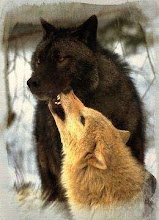Shot in the park: America's national parks like you've never seen them
By Gerri Miller
Tue, Sep 15 2009 at 1:15 AM EST
Read more: NATIONAL PARKS
“I took into consideration geography, the season,” says Shive, who visited some parks multiple times. “Yellowstone in summer is completely different from Yellowstone in winter,” he points out. Other than making sure to represent every region of the U.S. (excepting Hawaii), “We wanted to get away from the traditional national parks book, and show a side of the parks that hadn’t been shown.” Rather than present the images geographically by park, “I wanted to mix it up, for the pages to relate by color, line and shape. I’m trying to convey how everything is connected, and this is a really cool way to show it.” Including iconic spots like Old Faithful and the Grand Canyon was a must, but otherwise, “You have to read the caption to know where it is. It’s a really new look at the parks.”
Shive’s overall goal in doing the book was to “inspire people and get them motivated to go back and reconnect with nature. There are so few places like this anymore outside of the parks,” he notes, especially since so many state parks have closed or are in danger of doing so. A New Jersey native, he’s been passionate about the parks ever since his first family trip west to the Grand Canyon when he was 14, followed the following year by a visit to Glacier National Park in Montana. “That trip had a major influence on my decision to go to college in Montana at MSU Boseman, which is 90 miles north of Yellowstone National Park,” he says.
As for endangered species, “The Channel Island foxes are recovering but they walk a critical line because they’re isolated, and the wrong disease or the wrong management decision can wipe them out. It came close -- it was down to 15 foxes at one point and now it’s back up to around 1,500. That’s a conservation success story.”
Conscious of his own carbon footprint, Shive didn’t fly much on his photo trips (Denali in Alaska excepted), and estimates he put 72,000 miles on his car over the couple hundred days in the last two years he spent on the road. When he is home in Los Angeles, he keeps his office sustainable and paper-free. “I have bamboo floors, low-flow water units, and of course I recycle. The government needs to take the lead -- unless other alternatives are found it’s hard for people to make the huge strides that we need to make. But I think we can do our part too,” he believes.


No comments:
Post a Comment
Note: Only a member of this blog may post a comment.